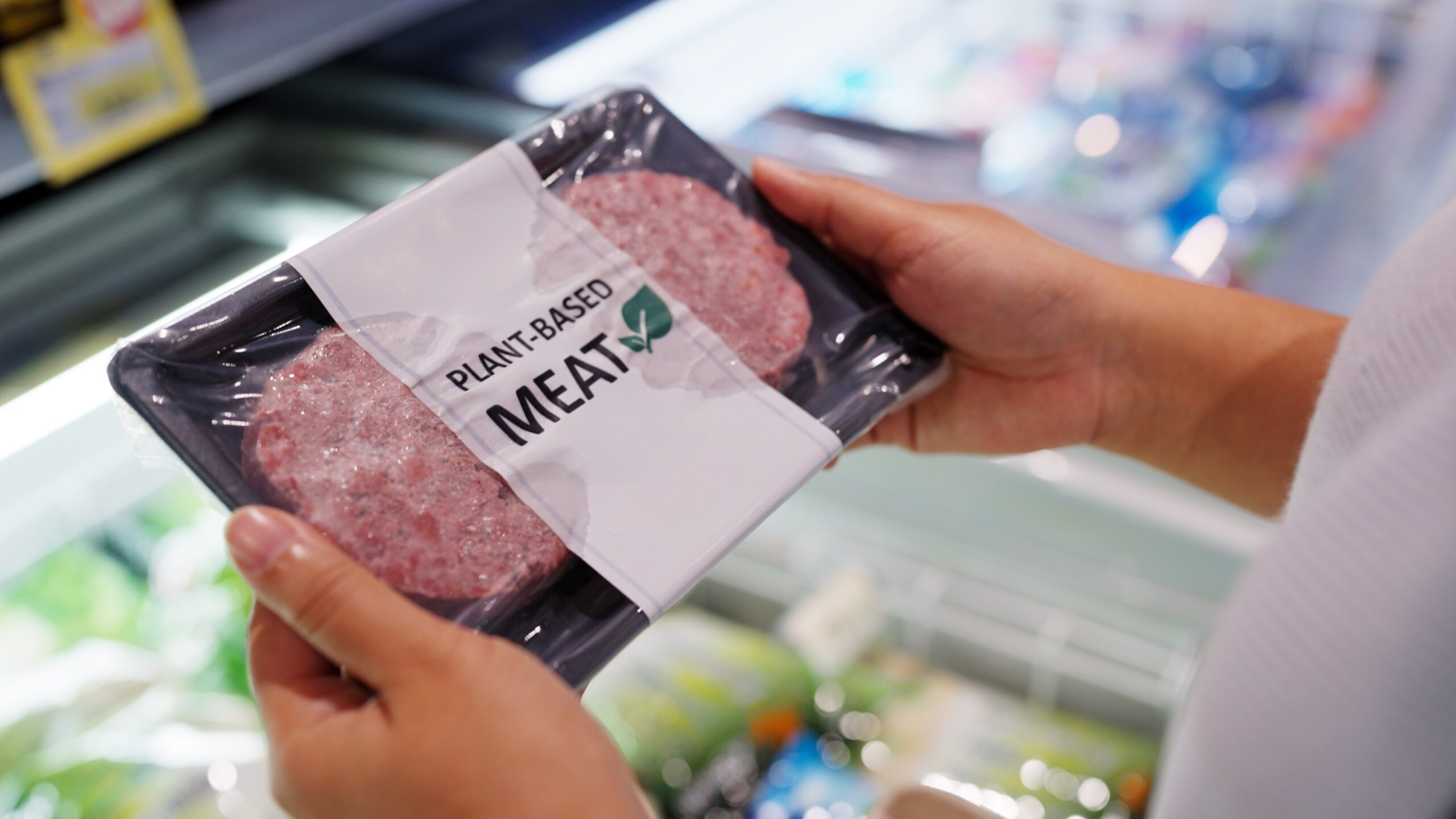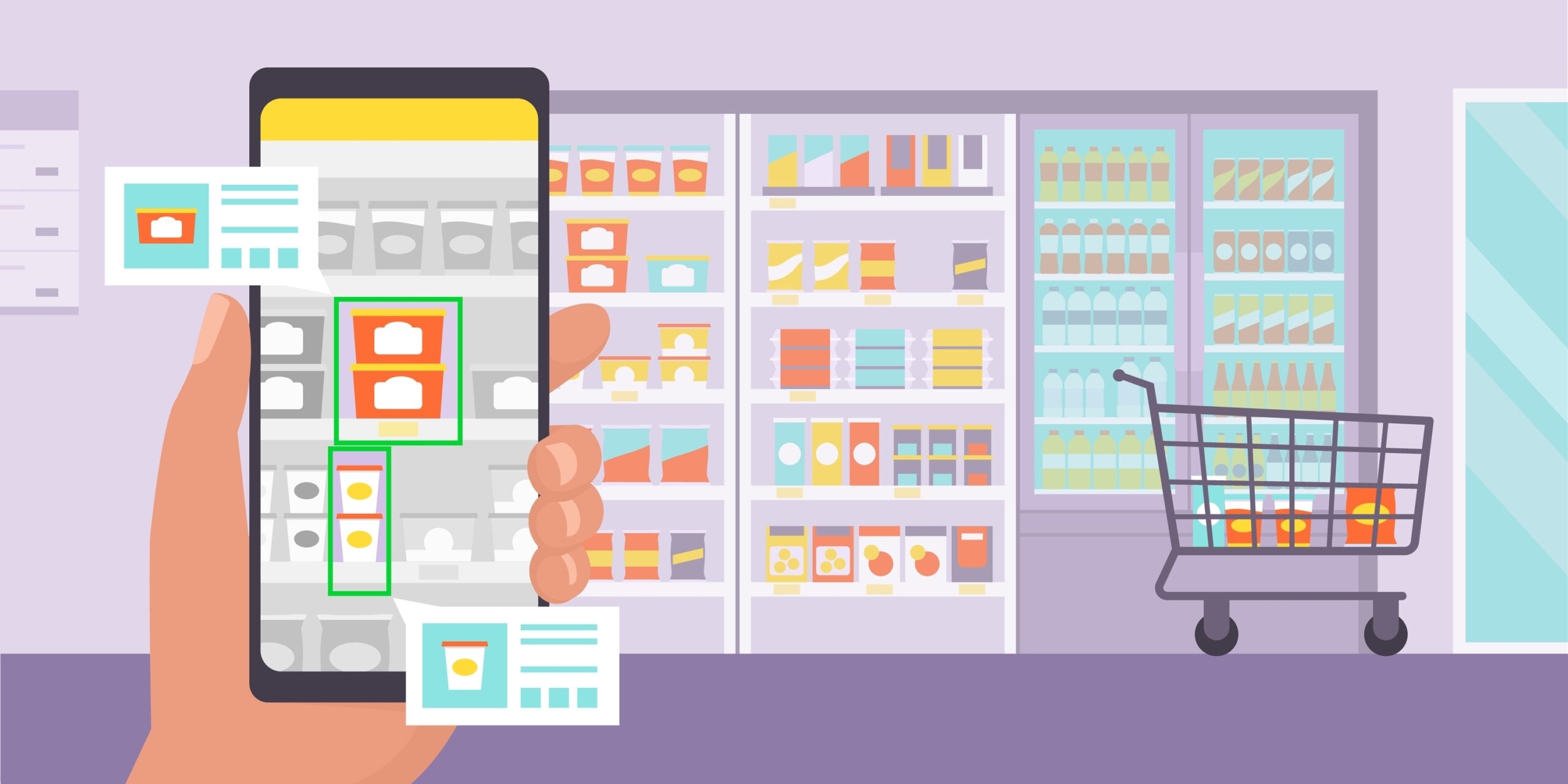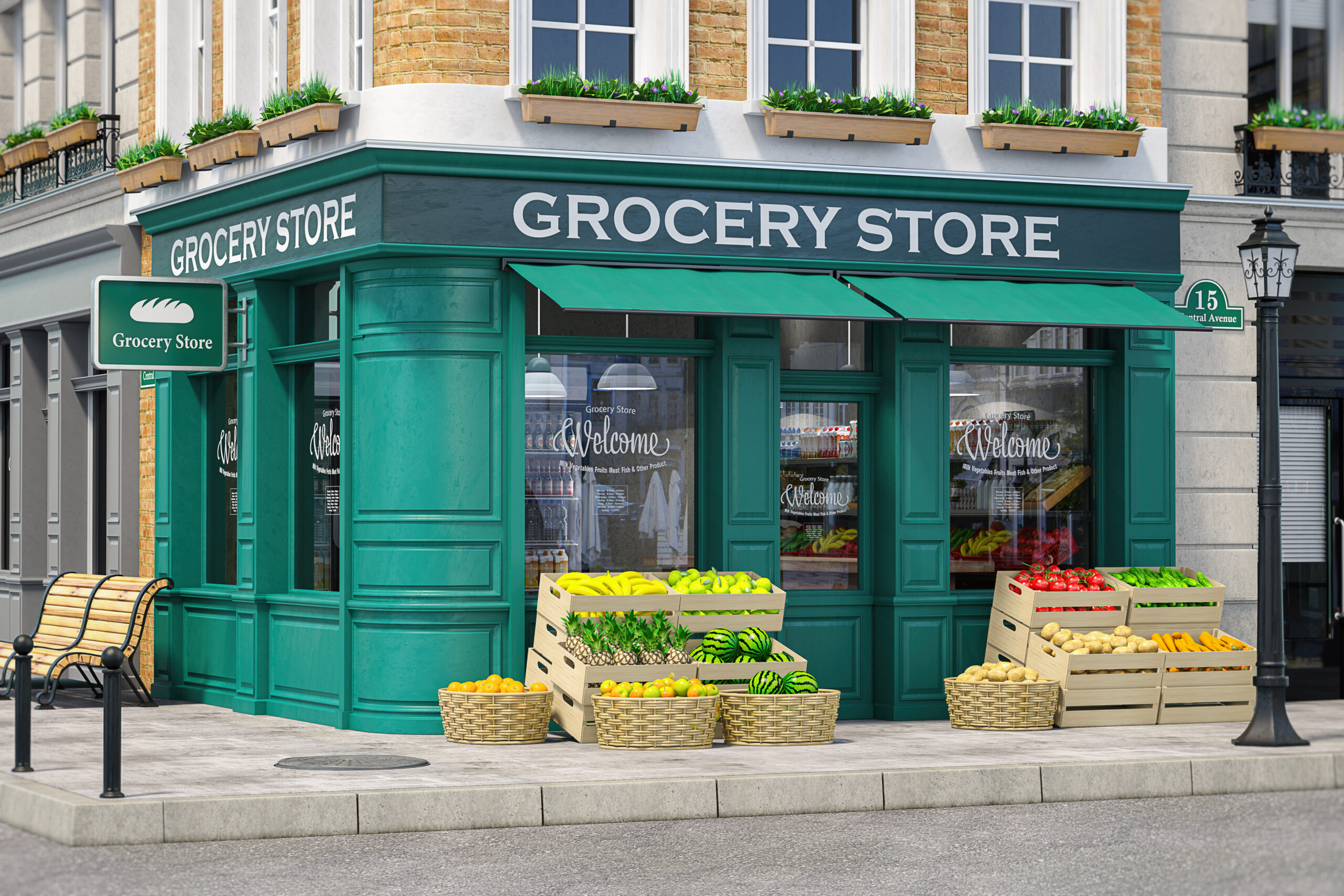Shelf space is where everything happens in retail merchandising. It’s where consumer packaged goods (CPG) strut their stuff, vying for attention, sales, and brand recognition. But how do retailers decide what products to stock and where to place them in store? The answer, as it often does, lies in data. Using data to identify the fastest-growing CPG categories helps retailers stay ahead of the competition. It’s one of the surefire ways to increase sales and maximize profits.
Data-driven insights are a powerful tool in any retailer’s arsenal. They inform decisions on which products to prioritize and where to allocate valuable shelf space. So, what CPG categories are taking the retail world by storm these days?
Let’s take a peek at the ones you need to know about!
The fastest-growing CPG categories
These trending industries you are about to see are dominating market share. Even big brands are gaining traction with new product launches that cater to these emerging categories. Here are some of the fastest-growing CPG categories year-over-year.
1. Functional beverages
Functional beverages go beyond quenching thirst. They offer additional benefits like energy boosts, hydration support, or even improving gut health. Regarding the latter, you may have heard of the kombucha trend, which took the wellness world by storm. Protein shakes are still the go-to for muscle recovery, and energy drinks provide that extra burst of motivation during a long day. There are also vitamin-infused waters for overall wellness.
One possible strategy retailers could consider is allocating shelf space to innovative offerings from companies like PepsiCo. The beverage giant recently launched a line of functional drinks called ‘Driftwell.’ It claims to help people relax and get an improved night’s sleep. This is also a relevant example of a brand aligning with current public interests by creating a product that can compete with other drinks in the category.
These are the types of beverages that appeal to a wide audience of consumers who desire more than flavor from their drinks.
2. Health and wellness products
Health and wellness is a vast industry that targets more than just one type of customer. There’s an array of nutritional supplements, workout gear, relaxation aids, and more. Retailers can stock their shelves with items relevant to those looking for an improvement in their overall health. Even shoppers whose goal is simply to maintain a balanced lifestyle are becoming privy to the health products available today.
One key demographic is the active, fitness-focused consumer. These shoppers are interested in items like protein powders, vitamins, and sports accessories. All of these products are designed to support their athletic pursuits. On the other hand, some consumers concentrate on stress relief and relaxation techniques. Think yoga mats, essential oils, and meditation resources. Both demographics are spending money in the health and wellness-focused categories.
3. Natural personal care products
The natural route is a popular choice for those interested in clean beauty solutions. This category encompasses earth-friendly skincare, haircare, and cosmetic products made with natural ingredients. The consumers who buy these products usually want to move away from mainstream products that they view as harsh on the body and harmful to the environment.
Natural personal care products fix those problems since the products are promoted as gentle on the skin and the environment. Brands like Burt’s Bees and Dr. Bronner’s are popular among these shoppers, a testament to this trend.
4. Organic food
Another popular category is organic food which offers consumers chemical-free alternatives. They are often packed with higher nutrient content than their conventional counterparts and contain fewer pesticides. These products range from fresh produce to packaged goods like pasta sauces and cereals. The organic food market spans several categories within the CPG industry.
Retailers can attract eco-conscious shoppers who focus on sustainable and clean farming practices. Additionally, those with dietary restrictions, allergies, or health-conscious shoppers may gravitate toward them.
5. Plant-based products
The plant-based movement is unstoppable as more consumers are embracing a plant-forward lifestyle. As a result, the demand for plant-based products has skyrocketed. Retailers who recognize this growing trend can capitalize on it by offering a diverse range of products.
These include a selection of meat substitutes, dairy alternatives, vegan skincare, and more. Plant-based products cater to vegetarians, vegans, and anyone looking to reduce their consumption of animal products. Closely monitor industry trends and stay current with brands like Beyond Meat, Impossible Foods, and Daiya Foods, and cosmetics brands like Thrive Causemetics and The Ordinary. These frontrunners can show you how to stay ahead of the curve and secure market share in this rapidly expanding category.
6. Private-label brands
Private-label brands are no longer synonymous with low-quality, generic options. Today, you can find countless high-quality private-label products at competitive prices. They give consumers an alternative choice to name-brand items for a more affordable price. All without sacrificing quality.
Retailers such as Trader Joe’s and Costco have successfully leveraged private-label brands. They’ve added them to their portfolios to attract budget-conscious shoppers. Even so, they still maintain a reputation for quality.
Private-label alternatives can be offered across various product categories. Retailers can provide customers with cheap options, from food staples to personal care items. This strategy encourages customer loyalty. But it also helps retailers differentiate themselves from competitors in a crowded market.
Why are these categories growing?
We’ve explored the fastest-growing CPG categories, but you might wonder why they’re outpacing others. Here is an overview of the factors contributing to this impressive growth.
Increasing consumer awareness and interest in health and wellness
We live in a hectic world, leading people to become more proactive about caring for their physical and mental well-being. This self-care movement has people turning to consumer goods that support their wellness journeys.
As social media influencers and health experts continue to promote the importance of self-care, Gen Z and millennial shoppers are driving the demand for wellness-focused products. It’s a trend that’s unlikely to slow down anytime soon.
Rise in sustainable and ethical consumerism
Sustainability is no longer a buzzword – it’s become a guiding principle for many consumers. In the past decades, the awareness about climate change and environmental issues has only increased. Now, shoppers are seeking out products that align with their values. They look for CPG companies with ethical supply chains, eco-friendly packaging, and a low environmental impact.
Gen-Z is especially passionate about sustainability and ethical shopping. A recent study found that 73% of Gen-Z consumers would be willing to pay more for sustainable and ethical products.
Organic foods, personal care items, and private-label all fit into this sustainability category. Embrace ethical consumerism to attract new customers and build trust with existing ones. Many customers appreciate companies that prioritize social responsibility.
Shifting dietary preferences
Consumer diets have evolved significantly over the past few years. Many people now follow specific eating plans or dietary restrictions. There’s gluten-free, keto, plant-based, and the list goes on. In turn, this diet influences the types of products they buy.
Instead of focusing only on these products, it’s best to offer them alongside regular options. You can then position yourself as a one-stop shop for customers seeking specialty items. At the same time, you can continue serving those who prefer more traditional food options. It’s a masterclass in providing a superior customer experience.
Advancements in technology and manufacturing
The era of lab-grown meats and 3D-printed snacks may soon be upon us as advancements in technology and manufacturing are paving the way for innovative product development. As time goes on, these technologies are becoming more accessible and affordable. We’ll see companies creating groundbreaking products that customers never thought possible.
These new, cutting-edge products do wonders to pique consumer interest. Some may be novelty items that are only interesting the first time. Yet, if used properly, they can be a great way to stand out from the competition and boost sales.
Rising costs of goods
The constant fear of recession post-pandemic has people clutching their wallets a bit tighter. The unstable costs of living and economic conditions are turning consumers more budget-conscious, even when shopping for everyday essentials. This has led to a surge in demand for private-label CPG brands offering competitive products.
Retailers who invest in their private label portfolios can attract price-sensitive shoppers. Private labels have become a popular choice for many consumers. And since the products are branded under the retailer’s name, customers will return for more. It’s crucial to ensure your private label offerings are up-to-date and well-stocked.
Strategies for retailers
Knowing and understanding these new trends is the first step toward bringing the products shoppers want to store shelves. Yet, it’s only half the battle. Here are some strategies you can use to ensure your retail business stays competitive in the CPG market.
Stock the right mix of products
One crucial strategy is to offer a mix of products that cater to different customer needs. For example, retailers can stock both traditional dairy products and plant-based alternatives. Your lactose-intolerant customers will be happy, while others can stick with their dairy preferences.
Note that even though these new segments are growing does not mean they are replacing traditional customers. The broader market is still alive and well. It’s essential to cater to all segments, conventional and modern alike.
Another smart move is entering partnerships with big brands to embrace direct-to-consumer (DTC) strategies. Walmart‘s collaboration with Unilever is an excellent example of this. They moved Unilever‘s online DTC products in-store, which benefited both companies. Unilever enjoy’s Walmart‘s robust supply chains. Walmart piggybacks off Unilever‘s digital marketing efforts. It’s a win-win.
Understand consumer preferences
Retailers informed about consumer preferences are better equipped to make stocking decisions. After all, you want to stock your shelves with items that customers truly want. You can’t blindly restock items because they made the list of trends. The key is to know what customers like and meet their needs before they even have to ask for it.
People might be attracted to the latest innovation, but they’re more likely to buy products that meet their specific needs. Listen to your customers and study which items move off the shelf faster.
Utilize data and analytics to drive decision-making
Data-driven decision-making is essential for success in the retail landscape. Retailers can use customer purchase data to identify the most profitable product categories. Allocating shelf space based on these insights can maximize sales.
This approach allows retailers to be proactive rather than reactive when stocking shelves. They’ll have the right products at the right time, giving them a competitive edge over other retailers. In short, the key to success in the CPG market is being responsive and agile.
Collaborate with CPG manufacturers to optimize shelf space
Working with CPG manufacturers can lead to mutually beneficial outcomes. For example, retailers can collaborate with manufacturers to develop customized product packaging. It can even be tailored to enable more efficient use of shelf space. This collaboration increases the number of products that can be displayed at once. It might also lead to an increase in sales, as more shoppers can identify the product they want more quickly.
Use 3D Digital Twin testing to leverage the fastest-growing CPG categories
Virtual reality (VR) testing is an innovative new technology that helps retailers to understand the fastest-growing CPG categories and optimize shelf space allocation. With a 3D digital twin model of a store, retailers can test and fine-tune product placement. They can visualize the store layout before implementing changes in a physical store.
E-commerce sales data also serves as a valuable benchmark for understanding what sells. The growth of e-commerce during the pandemic and lockdowns shed light on consumer behavior and preferences. Online sales data from marketplaces like Amazon are gold mines. They help inform retailers’ decisions about which products they should prioritize in-store.
Compare online shopping trends with in-store performance to gain a better understanding of the market. You’ll find which products resonate with customers across different channels.
Connect with InContext to learn more about retail trends and strategies
The fastest-growing CPG categories are shaping the new age of retail, which means it’s essential for retailers to stay informed about these trends.
Contact InContext to ensure your long-term success in the competitive world of CPG retail. Our VR testing technology can help you optimize shelf space allocation and increase sales. Leverage our expertise to stay ahead of the curve and become a leader in CPG retail.





